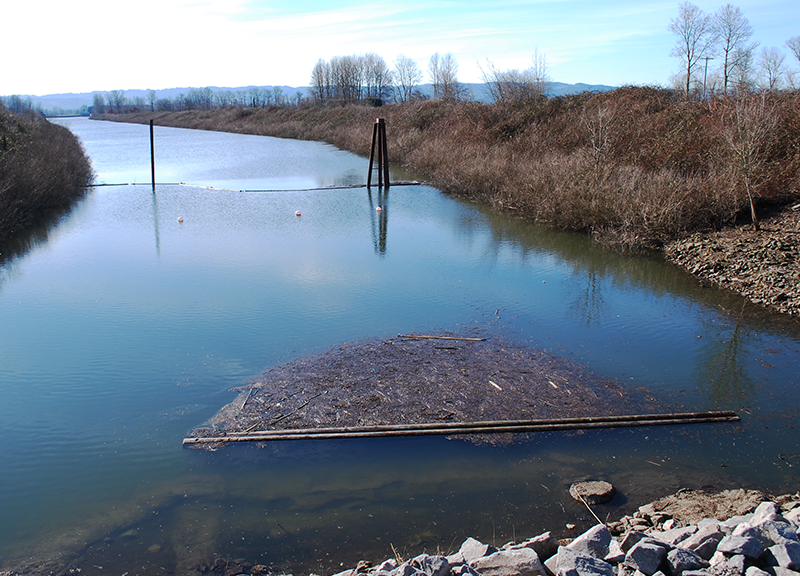Port clears Flushing Channel, recycles material
 The port’s flushing channel was created in 1983 as part of the Vancouver Lake Restoration Project. The channel carries Columbia River water under Lower River Road into the lake, essentially “flushing” it with fresh water.
The port’s flushing channel was created in 1983 as part of the Vancouver Lake Restoration Project. The channel carries Columbia River water under Lower River Road into the lake, essentially “flushing” it with fresh water.
Port of Vancouver facilities team has recently completed a periodic clearing of the Flushing Channel, as wood and other debris wash into the channel from the Columbia and collects near the culverts. Port crews cleared the banks of invasive Himalayan Blackberry, then used a boat, grappling hooks, a drop box, and a 30 ton crane to lift material out of the channel.
The material found, including non-native weedy vegetation, were salvaged and recycled. Crews plan to complete the next series of flushing channel clearings this summer.
Tide gates in the Flushing Channel culverts are designed to allow water to enter, but not exit the lake. Vancouver Lake is heavily influenced by the tidal forces of the Columbia River through the Flushing Channel, and also through Lake River. It’s interesting to note that the 1983 restoration process and dredging between the Flushing Channel and Lake River resulted in the creation of the lake’s distinctive Turtle Island.
During our centennial, the port was fortunate enough to talk with Bob Lofgren, an engineer who aided with numerous dredging projects along the Columbia River from 1960 to 1995, including the flushing channel. In his interview, he reminds us that the port has and will continue to provide an essential service to Vancouver and beyond.
